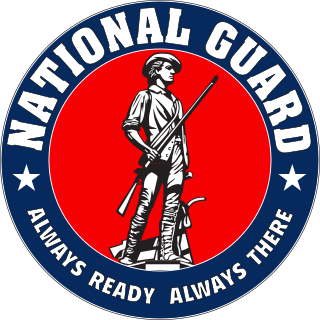
The National Guard is a state-based military force that becomes part of the U.S. military's reserve components of the U.S. Army and the U.S. Air Force when activated for federal missions. It is a military reserve force composed of National Guard military members or units of each state and the territories of Guam, the Virgin Islands, Puerto Rico, and the District of Columbia, for a total of 54 separate organizations. It is officially created under Congress's Article 1 Section 8 ability to "raise and support armies". All members of the National Guard are also members of the organized militia of the United States as defined by 10 U.S.C. § 246. National Guard units are under the dual control of state governments and the federal government.

A lancer was a type of cavalryman who fought with a lance. Lances were used for mounted warfare in Assyria as early as 700 BC and subsequently by India, Egypt, China, Persia, Greece, and Rome. The weapon was widely used throughout Eurasia during the Middle Ages and the Renaissance by heavy cavalry, but fell out of general use by the late 16th century, before its revival by light cavalry in the early 19th century.

The Massachusetts National Guard is the National Guard component for the Commonwealth of Massachusetts. Founded as the Massachusetts Bay Colonial Militia on December 13, 1636, it contains the oldest units in the United States Army. What is today's Massachusetts National Guard evolved through many different forms. Originally founded as a defensive militia for Puritan colonists in the Massachusetts Bay Colony, the militia evolved into a highly organized and armed fighting force. The Massachusetts militia served as a central organ of the New England revolutionary fighting force during the early American Revolution and a major component in the Continental Army under George Washington.

The West Virginia National Guard is a part of the West Virginia Department of Military Affairs and Public Safety. It comprises the West Virginia Army National Guard and the West Virginia Air National Guard. Unlike some states, West Virginia does not maintain a state defense force, nor is there a naval component to the state's military forces.

The Wisconsin Army National Guard has dual state and federal roles, and is jointly funded and maintained by both governments. Its federal mission is to provide trained units to the United States Army in time of war or national emergency. Its state mission is to help civil authorities protect life and property and preserve peace, order, and public safety in times of natural or human-caused emergencies. The governor, who is the commander in chief of the Guard when it is not activated for federal service, appoints the adjutant general who directs the Wisconsin Department of Military Affairs, of which the Guard is a part. Members of the National Guard are typically part-time soldiers who attend unit drills one weekend per month and serve a two-week annual tour of active duty. All officers and enlisted personnel must meet the same physical, education, and other eligibility requirements as members of the active-duty services.

The Pennsylvania Army National Guard, abbreviated PAARNG, is part of the United States Army National Guard and is based in the U.S. Commonwealth of Pennsylvania. Together with the Pennsylvania Air National Guard, it is directed by the Pennsylvania Department of Military and Veterans Affairs. The PAARNG maintains 124 armories and is present in 87 communities across the Commonwealth.
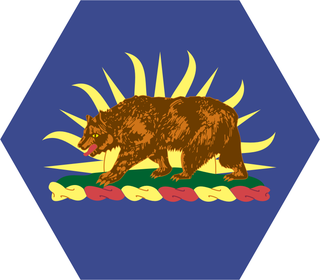
The California Army National Guard is one of three components of the California National Guard, a reserve of the United States Army, and part of the National Guard of the United States. The California Army National Guard is composed of 18,450 soldiers. Nationwide, the Army National Guard comprises approximately one half of the US Army's available combat forces and approximately one third of its support organization. National coordination of various state National Guard units are maintained through the National Guard Bureau.

The Georgia Army National Guard is the Army National Guard component of the Georgia National Guard, administratively part of the Georgia Department of Defense. It consists of more than 11,100 citizen-soldiers training in more than 79 hometown armories and regional facilities across the state. Georgia’s Army Guard is the sixth largest in the nation and includes combat, combat support and combat service support units.

The Ohio Army National Guard is a part of the Ohio National Guard and the Army National Guard of the United States Army. It is also a component of the organized militia of the state of Ohio, which also includes the Ohio Naval Militia, the Ohio Military Reserve and the Ohio Air National Guard. The Ohio Army National Guard consists of a variety of combat, combat support, and combat service support units. As of September 2010, its end strength exceeded 11,400 soldiers. Its headquarters is the Beightler Armory in Columbus, Ohio. Many units conduct Annual Training at Camp Grayling, Michigan.
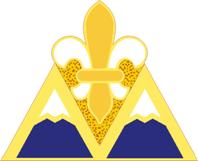
The Montana Army National Guard is a component of the United States Army and the United States National Guard. Nationwide, the Army National Guard comprises approximately one half of the US Army's available combat forces and approximately one third of its support organization. National coordination of various state National Guard units are maintained through the National Guard Bureau.
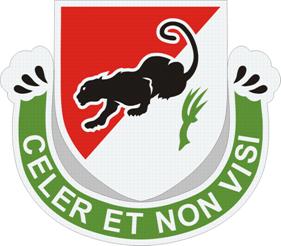
The 31st Cavalry is a historical organization within the United States Army and the Alabama Army National Guard that began as a Troop of Cavalry under "The Alabama Militia Law of 1820". The unit was constituted on 24 July 1821 in the Alabama Militia as the 1st Regiment Cavalry Troop at Jackson, Alabama

The Rhode Island Army National Guard (RIARNG) is the land force militia for the U.S. state of Rhode Island. It operates under Title 10 and Title 32 of the United States Code and operates under the command of the state governor while not in federal service. National Guard units may function under arms in a state status, therefore they may be called up for active duty by the governor to help respond to domestic emergencies and disasters, such as those caused by hurricanes, floods, or civil unrest.
The Governor's Guards of Connecticut are four distinct units of the Connecticut State Guard, a part of the organized militia under the Connecticut State Militia. There are two foot guard units and two horse guard units. All four units are formed fully of volunteers and serve under the authority of the Connecticut Adjutant General and the Governor of the State of Connecticut, who serves as the Guards' Commander-in-Chief.
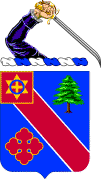
The 211th Military Police Battalion is a unit of the Massachusetts Army National Guard. Its Headquarters and Headquarters Detachment is descended from the First Corps of Cadets, initially formed in 1741. It is one of several National Guard units with colonial roots. Its motto is Monstrat Viam – "It Points the Way." While it has served in five wars, the sub-unit's primary contribution to Massachusetts and to the United States was as an officer-producing institution for new regiments from the Revolutionary War through World War II.
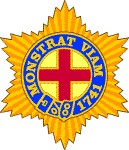
The First Corps of Cadets of Massachusetts formed in 1741. Its motto is Monstrat Viam - "It Points the Way." While it has served in several wars, the sub-unit's primary contribution to Massachusetts and to the United States was as an officer-producing institution for new regiments from the Revolutionary War through World War II.
The 110th Cavalry Regiment was a regiment in the United States Army National Guard and was part of the Massachusetts Army National Guard.

The 104th Cavalry Regiment is a Regiment of the United States Army first established in 1921. Troop A, 1st Squadron is one of several National Guard units with colonial roots and campaign credit for the War of 1812.
Twenty-four current units of the Army National Guard perpetuate the lineages of militia units mustered into federal service during the War of 1812. Militia units from nine states that were part of the Union by the end of the War of 1812, plus the District of Columbia, are the predecessors of eighteen units that currently exist in the Army National Guard. Two of the four units derived from Virginia militias are in the West Virginia National Guard; at the time of the War of 1812, West Virginia was still part of Virginia. Only two current units, the 155th Infantry, a component of the Mississippi National Guard derived from militia units organized in the Mississippi Territory and the 130th Infantry, a component of the Illinois National Guard derived from militia units formed in the Illinois Territory, are from states or territories west of the Appalachians. Unfortunately, no militia units from the states of Kentucky, Louisiana, Ohio or Tennessee, or from the Indiana, Michigan, Missouri or Louisiana Territories, where militia units played a major role in the fighting, have survived as units in the modern Army National Guard.

The Pennsylvania State Guard is the currently inactive official state defense force of the state of Pennsylvania, which was active during World War II and the Korean War. The unit was organized as a home guard composed of volunteers who were trained and organized as parallel to the state's National Guard. As a part of Pennsylvania's official militia, the Pennsylvania State Guard was trained, organized, and funded by the state of Pennsylvania, answered to the governor, and could not be federalized or deployed abroad.

















